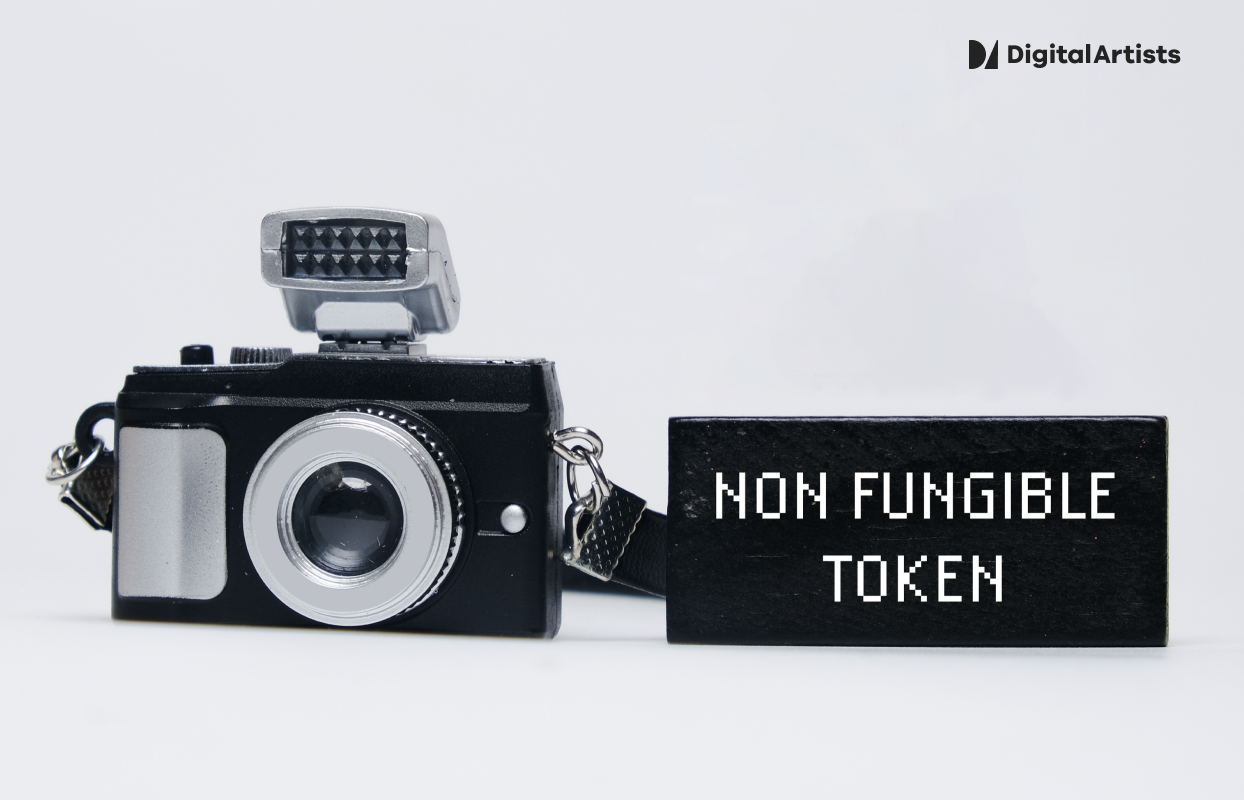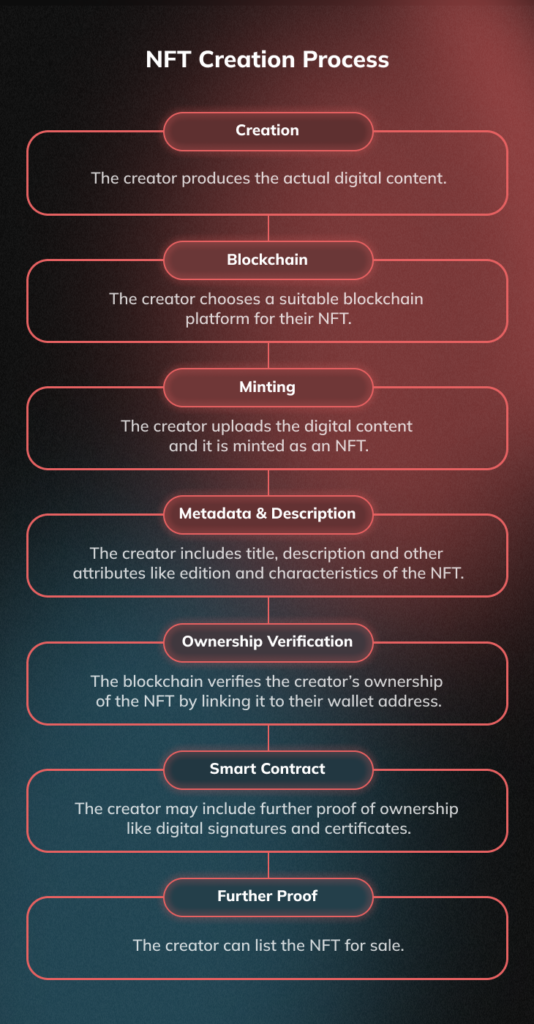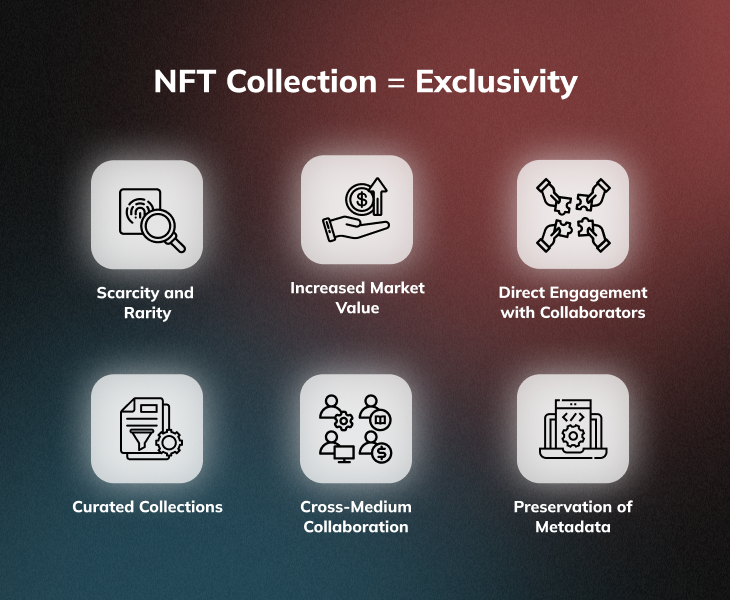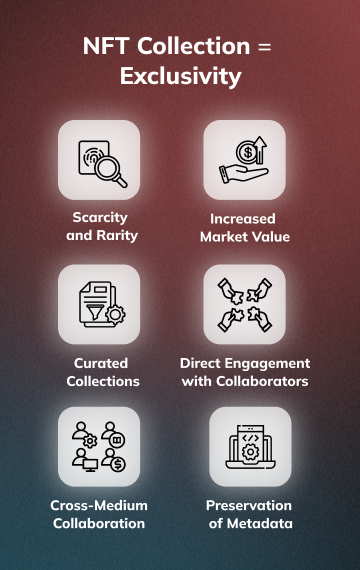


So, you’re a photographer and you have heard about NFTs in the grapevine. Now you’re wondering how you can utilise NFTs for your stunning photography creations. Well you’ve landed in the right place. We have put together the ultimate guide for photographers and NFTs. We will go over the topic with a fine tooth comb to ensure you will be able to make an informed decision on how to make the next steps into the new digital artwork era.
When it comes to photography being created in an NFT form, it is somewhat of a new digital technology. We have already covered how NFTs will change the world and photography is just one of the niches that NFTs will revolutionise in the near future. Let’s take a look into how photography will adapt into digital art below.
In the most simplistic terms, most photographers have a certificate of authenticity attached to their artwork to confirm their artwork is real and an original copy. Should the artwork be resold, without the certificate of authenticity, it would render the artwork as worthless, as the owner would not be able to prove it’s an original copy.
When the photos are converted into NFTs, everything changes. As the image is now on the Blockchain as a digital image, it becomes impossible to edit or change. Owners of the digital images can easily be traced back as every transaction and sale is stored forever on the Blockchain.
Let’s give an example to make it easier to understand. Let’s say a celebrity figure such as Brad Pitt sells an image in an NFT form. Everytime the image is sold, its selling price (this is important and we will get onto that further in the article) and the new owner is stamped in the Blockchain. See image below for the history of the NFT.
The NFT can always be traced back to the original owner (Brad Pitt), if it doesn’t go back to the original owner, then the NFT isn’t an original. It’s as simple as that. Anyone can copy a NFT image, just as anyone can take a screenshot of the Mona Lisa, however, all the transactions history of the NFT can be tracked back on the Blockchain.
As a photographer, there’s many benefits to converting your artwork into NFTs. It can be financially beneficial to convert your photography as well as easier to organise your work. Let’s take a look into some of the most important benefits below.
Many photographers are often frustrated with the low commission rates that are offered through the sales of stock photo agencies. Once the image is in digital form, the creator has full rights over the image. They can distinguish how many copies should be published and how much it should sell for.
Probably the biggest benefit outside of copyright laws. In the bricks and mortar world, once a photographer sells their work, it’s pretty much a done deal – and the artwork is most likely never seen or heard from again.
With NFTs, you will receive royalties on all future re-sales. Artists and photographers often gain provinace as their art becomes more mainstream, generally the NFTs become more valuable. Most platforms offer a resale commission of around 10%.
As we have mentioned earlier, it’s impossible to edit any Blockchain transactions. With NFTs, fakes exist, however, should the buyer or publisher do their due diligence in the tracking process, then no NFT can be copied.
The creator will have full ownership over their photography. They will be able to set their own price, the number of copies and more importantly, ownership of who can use their images. Nobody would be able to use the imagery without either purchasing the image, or obtaining full consent from the owner.
Photography is probably the most popular pastime this century. Nowadays, everyone owns a smartphone that is capable of capturing stunningly beautiful imagery. With millions of people taking pictures everyday, it’s more likely that someone will shoot that award winning moment than they would pre-smartphone, a decade ago.
Now with so many people taking photos, the chances of someone taking a truly unique shot increases dramatically. This is where the beauty of NFTs takes shape. Prior to NFTs, the photographer had to sell their images to stock photography websites, then they would watermark the image and remove it once someone purchased it. With NFTs, you have total control of your photography portfolio.
When it comes to selling your artwork, you determine everything related to sale, such as quantity, price and even who you wish to sell too. As mentioned earlier, the royalties from future re-sales far outweighs any money made from stock photography.


Now you understand the ‘blueprint’ behind NFTs and photography, let’s move on to how you convert your art into NFTs. The process is a fairly simple one once you have signed up to the relevant websites.
There are many different Cryptocurrency websites that allow NFT creation. Depending on which website you decide to use, the minting fee will differ, so we advise you to research the platforms prior to signing up.
Each platform has their own fees for minting and some will require you to apply to become a publishing artist before you can create NFTs. Here you can see how you can apply to become a creator in DigitalArtist.
When NFTs first hit the digital scene, minting fees could reach anywhere up to $500 per NFT. A few years on, the price has significantly dropped. Nowadays you can expect to pay anything from $5 – $100, again depending on the website you decide to use.
Once you have chosen the platform you would like to create your NFTs on, then you will first need to create a digital/crypto wallet or It’s this digital wallet that will hold your portfolio of NFTs and store your funds when you sell.
First you will need to head over to the NFT platform and create an account. Once you have created your account you will need to verify your identity. This is a normal security procedure for all top cryptocurrency platforms.
Once your account is set up and verified, you can now purchase Cryptocurrency such as Ethereum (Ethereum is generally used as the common monetary token for purchasing or selling NFTs). Any Crypto that is purchased will be stored in your Crypto wallet.
Now that you have your Crypto wallet set up, you can head over to the NFT section of the chosen platform. There you can check the marketplace, see upcoming NFT drops and mint your own NFT after you have completed the application and have been approved.
Once you’ve been approved as a creator, you can mint your collectibles. You usually begin by clicking on a “Create” button in the navigation section.
The limitation of each NFT platform vary, but usually it will allow you to create up to 50 NFTs per week. Each minted NFT will be providing you with an option on the number of copies you would like to mint (up to 10).
The minting process can take up to 30 minutes, depending on the network that is used. Once completed, you are now the owner of your very own NFT and you will be able to view it in your NFT account and there you will have the option to add a selling price, should you wish to place it on the marketplace.
Now that you have created your NFT, it’s important to note how to create a great collection. Collections can also be known as drops. An NFT collection is a variety of digital images released by an artist which entails a limited number of selected NFTs.


Generally speaking, the collection will consist of the same creative design with slight variations, making each NFT within the collection unique and the more unique the digital image is, the more valuable it becomes.
Creating a wonderful NFT collection is probably the most important factor when it comes to selling your photography as NFTs. Collectors look for unique traits within your art and how they correspond with each other. Let’s take a look at some of the most important factors for you to consider before creating your collection.
Having a cohesive NFT theme is extremely important. Your images should relate in one way or another to the other NFTs within your collection. If your collection is about pizza eating animals, it makes no sense to add a photo of the moon. Try to keep to the same theme per collection.
As mentioned earlier, it’s beneficial to have a few super unique NFTs in your collection, especially if you’re adding many NFTs into your collection. Collectors love the fact they could grab a bargain NFT, especially if they are purchasing on the drop, which means they’ll be buying your NFT randomly – more on how drops work below.
One of the biggest mistakes people make when selling NFTs is neglecting collection and image descriptions. If you want to watch a good movie, you will watch the trailer to see if it’s something you will like and the same goes for NFT collections. Explain what the collection is about, sell the story behind it. Once you have would-be collectors buying into your compelling story, you’re halfway there to making a sale.
So, what is an NFT Drop? How does it differ from an NFT collection? Are they the same thing? These are just some of the questions photographers ask when it comes to NFT drops. It can be confusing so we will go over how they work and hopefully give you a better understanding of it.
An NFT drop refers to an event where an artist is releasing an NFT collection for the purpose of making sales. On rare occasions, the drop can be used for promotions. The NFT drop is scheduled at an allocated time and date so the investors know when to sign into the Crypto platform that is arranging the event.
All NFT drops have a limited amount of NFTs investors can purchase and they are sold on a first come first serve basis. If it’s a famous celebrity or brand behind the drop, then collectors often attend the drop hours before the scheduling in the hope they have an allocated spot in the queue to make a purchase.
Some drops have exclusive incentives attached to them. For example, in 2021 the band King of Leon had a music album released in the form of an NFT drop. Those lucky enough to get a copy could then use the NFT as a ticket for front row seats at one of their concerts.
| Drop name | Creator | Release Date | Total Revenue (in.mil) |
|---|---|---|---|
| Otherdeed | Otherside (Yuga Labs) | April 2022 | $300+ |
| Azuki | Chiru Labs | January 2022 | $300+ |
| Moonbirds | PROOF | April 2022 | $280+ |
| Goblintown.wtf | Truth Labs | Body content 1 | $37+ |
| Memories of Qilin | Emily Xie | March 2022 | $4,2 |
Nowadays, NFT drops have a wide-range of perks connected to them. Some offer you membership to digital events, some offer you free tickets to gyms and cinemas, whilst others offer exclusive access to events such as the Kings of Leon did. More and more worldwide brands, sporting events and celebrities are turning to NFT drops for social exposure in recent years.
And there you have it. Being a photographer and becoming a digital artist doesn’t really need to be a headache. Once you have signed up for your Crypto wallet, all you need to do is mint your collections, give them a nice description and then decide if you want to sell your art as a normal collection or you would prefer to ‘drop’ your collection.
We believe that NFT is the most significant thing that has hit the photography industry since the transition from film to digital.
Peter Hurley and Vadim Davydov
Headshot photographer and Headshot Crew member
NFTs and photography are a match made in heaven. It’s only a matter of time before both go hand-in-hand with each other. We would advise any photographer to look into NFTs as they could be very profitable in the long term. Don’t miss the boat!
Many questions arise when photographer’s first get started into the digital art world. Below we will try to answer some of the most frequently asked questions on photography and NFTs.
Due to the unique Blockchain technology, every NFT that has ever been minted has a timestamp with all the relevant data that cannot be edited, such as creator, selling price and old owners. Every NFT can be traced on the Blockchain back to its origin.
When a photographer decides to take the leap into NFTs, the benefits could be astounding. The photographer will have full control over their artwork. Counterfeiting will be a distant memory and probably the most important benefit will be the royalties from repeat sales.
Having a wonderful and relevant collection is paramount when it comes to selling your photography as NFTs. Collectors need to understand your collection theme before parting with their hard-earned money. A unique collection with a great cover story will have buyers queuing for hours for a piece of your collection.
NFT drops are often collections that are being sold on a particular day, generally by famous creators and celebrities. They’ll arrange a time and date of their special drop and people will access the NFT platform, often hours earlier to try and grab themselves a unique NFT bargain.
5 NFTs have actually sold for over 20 million dollars. The highest selling NFT in history is called “The Merge” by Pak. It sold for an unbelievable $91.8 million dollars back on December 2nd, 2021. The second most expensive NFT sold was “Everyday” by Beeple for $69.3 Million dollars!